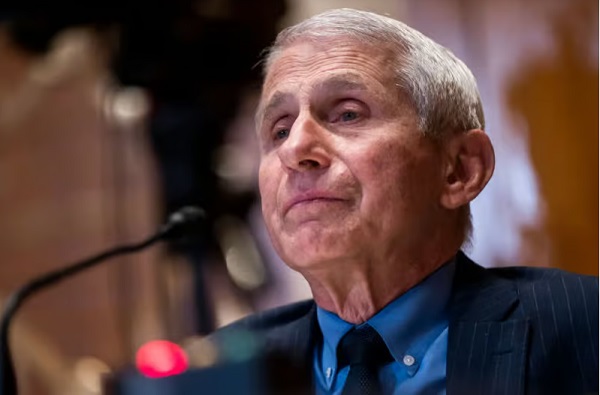Energy
Trump Keeps Focus On America’s Energy Production
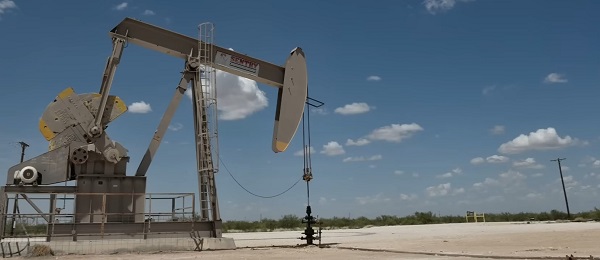

From the Daily Caller News Foundation
By David Blackmon
America’s energy landscape continues to shift under President Trump’s second term, and developments of just the past few days underscore a pragmatic pivot in U.S. energy policy. From Alaska’s oil fields to Illinois’ nuclear reactors, the focus is clear: energy security, economic growth, and cutting through the climate alarm-driven fog of the past administration. A pair of major developments this week paint a clear picture of some of the ways Trump administration energy policies are reinvigorating the domestic energy space without more economically ruinous federal spending.
First, the Trump administration’s move to reopen 13 million acres in the National Petroleum Reserve-Alaska (NPR-A) for oil and gas leasing is a gut punch to the Biden-era eco-orthodoxy. Interior Secretary Doug Burgum, called it a return to “balance” after a 2024 rule locked up half the 23-million-acre reserve.
Climate-alarm conflict groups like Earthjustice are predictably apoplectic, warning of climate doom. “By proposing to repeal these science-based regulations, the Trump administration aims to grease the skids for oil companies intent on industrializing even the most sensitive areas in the Western Arctic in pursuit of dirty oil that can have no place in our energy future,” Earthjustice Attorney Erik Grafe said in a release. “The administration should be working to develop a post-oil future for the region, not paving the way for outdated, destructive oil development.”
But native Alaskans living in the state’s Arctic North Slope region take a different view. “Today’s decision by the BLM is another important milestone in our effort to advance our Iñupiaq self-determination on our North Slope homelands,” said Nagruk Harcharek, President of Voice of the Arctic Iñupiat (VOICE). “It underscores what VOICE has always known and argued in court on behalf of our 21 member organizations: that the Biden administration’s 2023 rule affecting our NPR-A lands is deeply flawed and poses significant risks to our communities, economy, and culture. We applaud this development and look forward to collaborative engagement with the federal government and Congress about durable policies that support North Slope Iñupiat self-determination.”
Republican Alaska Representative Mike Begich agreed with VOICE, saying, “This decision is a major victory for Alaska and for every American who believes in energy independence and the rule of law,” said Congressman Begich. “The 2024 restrictions in the NPR-A were imposed with no serious consideration provided to those who work and live in the region and in clear violation of the law – hindering Alaska’s right to responsibly develop our resources.”
The required regulatory process means drilling isn’t imminent, but this signals Trump’s intent to unleash domestic fossil fuels. In a world where China and India still burn coal like it’s 1999, exploiting America’s massive oil and gas resources are a strategic necessity, not a sin.
Meanwhile, a blockbuster deal in Illinois signals an accelerating recovery in the nuclear power industry, focused on fueling AI datacenters. Constellation Energy inked a 20-year pact with Meta to supply 1,121 megawatts from the Clinton Clean Energy Center, powering Meta’s AI data centers starting in 2027. Extending Clinton’s life beyond Illinois’ expiring Zero Emission Credit program, adding 30 megawatts, and saving 1,100 jobs, this market-driven deal proves nuclear can thrive without heavy-handed mandates. It’s a model for keeping reliable, carbon-free power online while tech giants like Meta drive demand through the roof. It is probably no coincidence that this deal comes 10 days after President Trump signed 4 executive orders to jump-start the U.S. nuclear industry in a signing ceremony attended by Constellation CEO Joseph Dominguez and other industry executives.
These stories reveal a U.S. energy policy recalibrating toward pragmatism and strategic positioning. Trump’s team is betting on oil, gas, and nuclear to keep America’s economy humming while trimming the fat from bloated green programs. The NPR-A decision draws a line in the sand: energy security trumps ideology. Meanwhile, Constellation’s deal with Meta reveals a willingness to embrace clean energy; not with more subsidies, but on market terms.
The message is clear: America needs power that works, not intermittently or when the weather is right, but 24 hours every day, 365 days a year, and the Trump agenda is focused on restoring American Dominance in those forms of energy. In a world of rising demand and geopolitical chess, it’s the logical strategic imperative.
David Blackmon is an energy writer and consultant based in Texas. He spent 40 years in the oil and gas business, where he specialized in public policy and communications.
Energy
Sending natural gas pipeline project back for environmental review could put $20 billion investment at risk

From Resource Works
Ksi Lisims LNG too important to fail
The BC Environmental Assessment Office (EAO) is expected to soon determine whether the Prince Rupert Gas Transmission (PRGT) pipeline project has been “substantially started” as per the conditions of its provincial environmental certificate. Later this summer, the EAO is also expected to issue a recommendation on the Ksi Lisims LNG project, which would be supplied by the PRGT pipeline.
If these regulatory hurdles are cleared, the project is still likely to face court challenges, including judicial review applications from environmental groups and potentially the Gitanyow First Nation. The stakes are high: Ksi Lisims LNG represents a $20 billion investment and is a clean energy mega-project that the government of Premier David Eby cannot afford to lose, both in terms of economic development and reconciliation with Indigenous communities.
Should the EAO conclude that PRGT has not made a substantial start, the project’s environmental certificate would expire. The proponents—the Nisga’a Nation and Western LNG—would then be required to restart the environmental review process from scratch. This would result in years of delay and potentially hundreds of millions of dollars in additional costs. Timing is especially critical for LNG projects targeting Asian markets, where long-term supply contracts, often lasting 15 to 20 years, must align with project timelines. Ksi Lisims aims to be operational by 2029.
Petronas Energy Canada CEO Mark Fitzgerald recently told the Greater Vancouver Board of Trade that Canada has an 18-month window to move key projects forward or risk losing investment opportunities. This warning echoes past experience: in 2017, Petronas canceled the Pacific Northwest LNG project just one week after the NDP government took office, despite having invested nearly $1 billion. That decision resulted in the mothballing of the PRGT pipeline and signaled the collapse of other major LNG projects, including Kitimat LNG (Chevron), Aurora LNG (Nexen), WCC LNG (ExxonMobil), and Prince Rupert LNG (Shell). Many investors instead shifted their focus to the United States.
While previous cancellations were partially attributed to macroeconomic factors, these did not deter LNG investment in other jurisdictions. In contrast, Ksi Lisims LNG has recently gained momentum, with significant financial backing from Blackstone Energy Transition Partners, Shell, and TotalEnergies through private placements, off-take agreements, and planned equity stakes. However, investor confidence is fragile and can evaporate if the project becomes mired in regulatory or legal delays.
The PRGT pipeline received its original environmental certificate in 2014 with a five-year term, later renewed once. The Nisga’a Nation and Western LNG must now demonstrate that substantial construction has commenced to maintain that certification. According to Western LNG, work completed includes clearing 47 kilometers of right-of-way on Nisga’a treaty lands, constructing 42 kilometers of road, and building nine bridges. Whether this constitutes a “substantial start” is under review. Groups such as Ecojustice and the Gitanyow First Nation have submitted objections, arguing that it does not meet the threshold.
It is notable that the Gitanyow originally supported PRGT through impact benefits agreements with the province and project agreements with the previous proponent, TC Energy. However, their position shifted after ownership transferred to the Nisga’a Nation and Western LNG. The Gitanyow now argue the project has changed substantially, including a re-routing near the western terminus to accommodate the new Ksi Lisims LNG terminal, which is located further north than the originally planned Pacific Northwest LNG terminal.
Such disputes highlight why both federal and provincial governments have recently begun developing fast-tracking legislation for major infrastructure projects deemed to be in the national interest. These new legislative tools are intended to reduce bureaucratic delays and provide greater regulatory certainty. Ksi Lisims and PRGT meet many of the criteria such legislation is designed to support and would be strong candidates for such treatment should the EAO’s decision result in further delays.
Importantly, Ksi Lisims LNG is not simply a project supported by the Nisga’a Nation—it is being led by them. In addition, all other First Nations along the proposed pipeline route, except the Gitanyow, appear to support the project and are being offered equity participation. This makes Ksi Lisims a powerful example of reconciliation in action.
Furthermore, the project’s floating LNG design significantly reduces its terrestrial footprint and associated environmental impact, particularly on fish habitats. The proponents have also committed to using electricity to power the liquefaction process—when it becomes available—to align with British Columbia’s net-zero emissions targets. These factors support the classification of Ksi Lisims LNG as a clean energy project.
If this project does not meet B.C.’s environmental and social standards, it is difficult to imagine what project could. As Ellis Ross, the newly elected Conservative MP for Skeena–Bulkley Valley, recently stated, “It hits so many of the bullets that politicians have been talking about for so many years.”
If federal and provincial leaders are serious about supporting “nation-building” infrastructure, then Ksi Lisims LNG should be at the top of the list—particularly if the EAO process creates further complications. That said, proponents remain cautiously optimistic. “I don’t think the Nisga’a will give up,” Ross added. “I don’t think it will fail. But if it doesn’t get approved, it will have to incur more cost and more time.”
Business
Carney’s Energy Mirage: Why the Prospects of Economic Recovery Remain Bleak
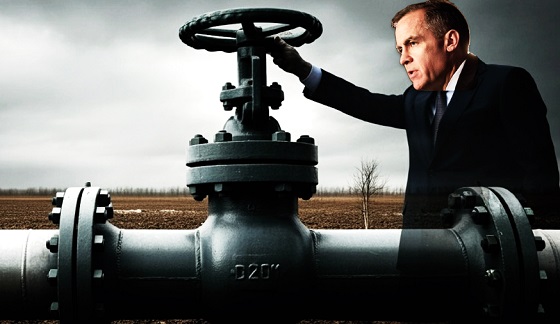
 By Gwyn Morgan
By Gwyn Morgan
Gwyn Morgan argues that Mark Carney, despite his polished image and rhetorical shift on energy, remains ideologically aligned with the Trudeau-era net-zero agenda that stifled Canada’s energy sector and economic growth. Morgan contends that without removing emissions caps and embracing real infrastructure investment, Canada’s recovery will remain a mirage — not a reality.
Pete Townshend’s famous lyrics, “Meet the new boss / Same as the old boss,” aptly describe Canada’s new prime minister. Touted as a fresh start after the Justin Trudeau years, Mark Carney has promised to turn Canada into a “clean and conventional energy superpower.” But despite the lovey-dovey atmosphere at Carney’s recent meeting with Canada’s premiers, Canadians should not be fooled. His sudden apparent openness to new energy pipelines masks a deeper continuity, in my opinion: Carney remains just as ideologically committed to net-zero emissions.
Carney’s carefully choreographed scrapping of the consumer carbon tax before April’s election helped reduce gasoline prices and burnished his centrist image. In fact, he simply moved Canada’s carbon taxes “upstream”, onto manufacturers and producers, where they can’t be seen by voters. Those taxes will, of course, be largely passed back onto consumers in the form of higher prices for virtually everything. Many consumers will blame “greedy” businesses rather than the real villain, even as more and more Canadian companies and projects are rendered uncompetitive, leading to further reductions in capital investment, closing of beleaguered factories and facilities, and lost jobs.
This sleight-of-hand is hardly surprising. Carney spent years abroad in a career combining finance and eco-zealotry, co-founding the Glasgow Financial Alliance for Net Zero (GFANZ) and serving as the UN’s Special Envoy for Climate Action and Finance. Both roles centred on pressuring institutions to stop investing in carbon-intensive industries – foremost among them oil and natural gas. Now, he speaks vaguely of boosting energy production while pledging to maintain Trudeau’s oil and natural gas emissions cap – a contradiction that renders new pipeline capacity moot.
Canada doesn’t need a rhetorical energy superpower. It needs real growth. Our economy has just endured a lost decade of sluggish overall growth sustained mainly by a surging population, declining per-capita GDP and a doubling of the national debt. A genuine recovery requires the kind of private-sector capital investment and energy infrastructure that Trudeau suppressed. That means lifting the emissions cap, clearing regulatory bottlenecks and building pipelines that connect our resources to global markets.
We can’t afford not to do this. The oil and natural gas industry’s “extraction” activities contribute $70 billion annually to Canada’s GDP; surrounding value-added activities add tens of billions more. The industry generates $35 billion in annual royalties and supports 900,000 direct and indirect jobs. Oil and natural gas also form the backbone of Canada’s export economy, representing nearly $140 billion per year, or about 20 percent of our balance of trade.
Yet Quebec still imports oil from Algeria, Saudi Arabia and Nigeria because Ottawa won’t push for a pipeline connecting western Canada’s producing fields to Quebec and the Maritimes. Reviving the cancelled Energy East pipeline would overcome this absurdity and give Canadian crude access to European consuming markets.
Carney has hinted at supporting such a project but refuses to address the elephant in the room: without scrapping the emissions cap, there won’t be enough production growth to justify new infrastructure. So pipeline CEOs shouldn’t start ordering steel pipe or lining up construction crews just yet.
I continue to believe that Carney remains beholden to the same global green orthodoxy that inspired Trudeau’s decade of economic sabotage. While the United States shifts course on climate policy, pulling out of the Paris Accord, abandoning EV mandates and even investigating GFANZ itself, Canada is led by a man at the centre of those systems. Carney’s internationalist career and personal life – complete with multiple citizenships and a spouse known for environmental activism – underscore how far removed he is from ordinary Canadians.
Carney’s version of “clean energy” also reveals his bias. Despite the fact that 82 percent of Canada’s electricity already comes from non-greenhouse-gas-emitting sources like hydro and nuclear, Carney seems fixated on wind and solar-generated power. These options are less reliable and more expensive – though more ideologically fashionable. To climate zealots, not all zero-emission energy is created equal.
Even now, after all the damage that’s been done, Canada has the potential to resume a path to prosperity. We are blessed with vast natural resources and skilled workers. But no economy can thrive under perpetual policy uncertainty, regulatory obstruction and ideological hostility to its core industries. Energy projects worth an estimated $500 billion were blocked during the Trudeau years. That capital won’t return unless there is clarity and confidence in the government’s direction.
Some optimists argue that Carney is ultimately a political opportunist who may shift pragmatically to boost the economy. But those of us who have seen this movie before are sceptical. During my time as a CEO in the oil and natural gas sector, I witnessed Justin’s father Pierre Trudeau try to dismantle our industry under the guise of progress. Carney, despite or perhaps because of his polish, may be the most dangerous of the three.
The original, full-length version of this article was recently published in C2C Journal.
Gwyn Morgan is a retired business leader who was a director of five global corporations.
-

 Business2 days ago
Business2 days agoCarney’s Energy Mirage: Why the Prospects of Economic Recovery Remain Bleak
-
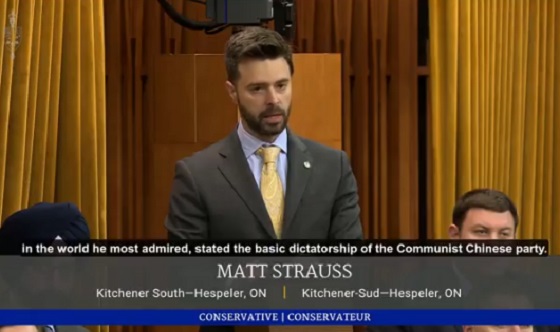
 National2 days ago
National2 days agoCensured doctor who’s now a Conservative MP calls COVID mandates ‘full Communism’
-

 Censorship Industrial Complex2 days ago
Censorship Industrial Complex2 days agoBC nurse faces $163k legal bill for co-sponsored a billboard reading, “I [heart] JK Rowling.”
-

 Censorship Industrial Complex1 day ago
Censorship Industrial Complex1 day agoLegal warning sent to Ontario school board for suspending elected school council member
-
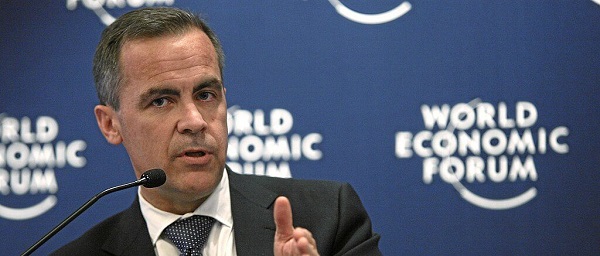
 Daily Caller2 days ago
Daily Caller2 days agoLiberals Embrace Islamic Extremism In Canada
-

 Business1 day ago
Business1 day agoThis Sunday, June 8, is Tax Freedom Day, when Canadians finally start working for themselves
-

 Fraser Institute1 day ago
Fraser Institute1 day agoHealth-care lessons from Switzerland for a Canada ready for reform
-

 Bruce Dowbiggin1 day ago
Bruce Dowbiggin1 day agoI’m A Victim, You’re A Victim, Wouldn’t You Like To Be A Victim, Too?




